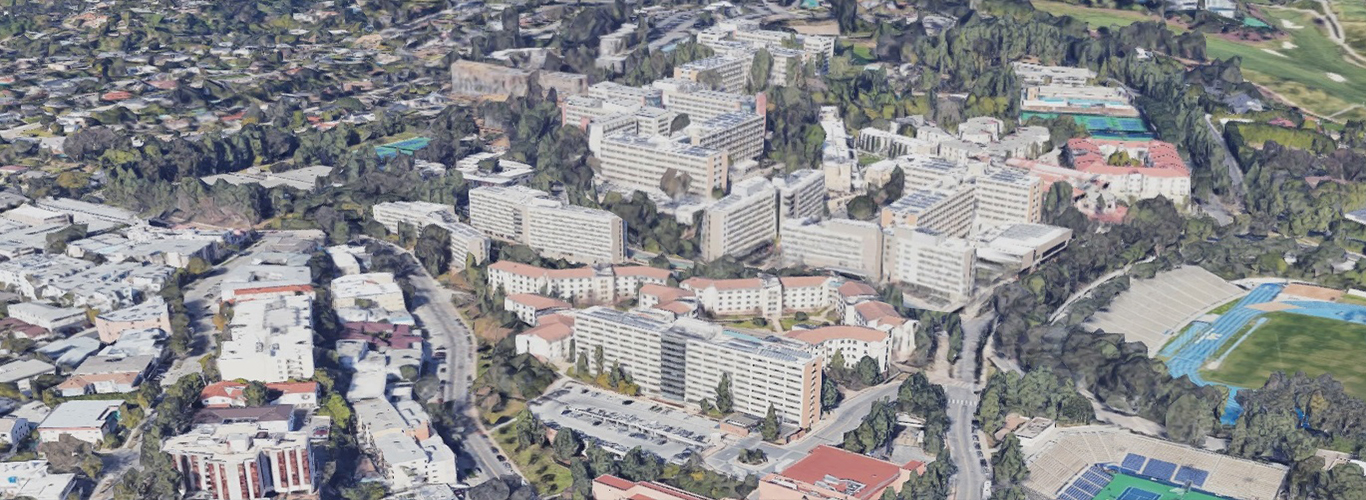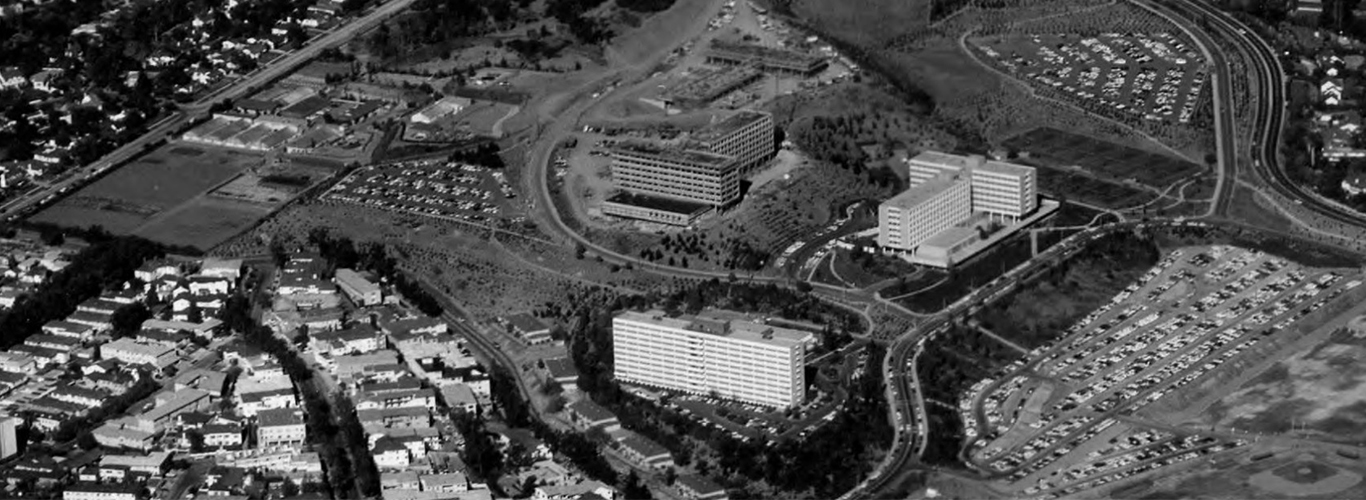"The Hill" in 1963 and 2020
When the historical photo of The Hill was taken in early 1963, few could have predicted the change that was in store for the campus, the nation and the world with the rise of the Civil Rights Movement, the expansion of the Vietnam War and the dawn of collegiate basketball’s greatest dynasty under Coach Wooden.
At the same time, there were also groundbreaking changes for UCLA Residential Life. As noted in this UCLA history article:
UCLA’s 40-year-status as a commuter college changed significantly on Nov. 19, 1959, when a crowd of University of California and UCLA luminaries dedicated Clarence A. Dykstra Residence Hall. The 10-story structure was designed to house approximately 800 men. Space opened up to women 18 months later.
The construction of Dykstra Hall marked the beginning of an on-campus housing expansion, as three additional high-rises — Sproul, 1960; Rieber, 1963; Hedrick, 1964 — were built to accommodate the postwar baby boom generation. The building of Dykstra also signaled the end of previous UC regental policy, which prevented the construction of student housing on campus.
The development continues to this day, with the opening of the Olympic and Centennial residence halls, the most recent additions to the campus’ student housing options, bringing the total number of students living on campus this quarter to approximately 14,500. In addition to student housing accommodations, there are award-winning dining halls offering options of all kinds; commons buildings containing student services, conference facilities, and classrooms; facilities for recreational and varsity sports; the Southern Regional Library; the Tom Bradley International Hall, which contains services for foreign students; and even a sand-trap where golfers can work on their short-game ꟷ all tucked into a corner of a campus that is, by area, the smallest of any in the UC system.
Visit the "Then and Now" archive.


